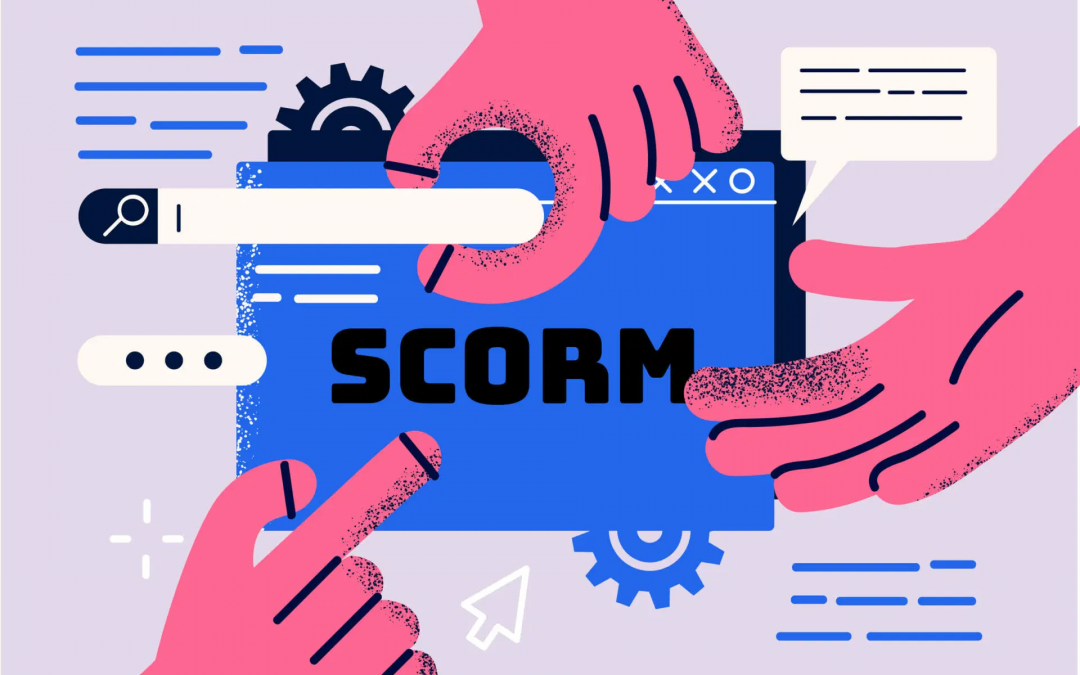The Sharable Content Object Reference Model (SCORM) is a set of systematic standards for eLearning software solutions. SCORM instructs programmers on how to develop code that will “play nicely” with other eLearning software. It is the industry de-facto standard for eLearning compatibility. SCORM, in particular, defines how online learning content and Learning Management Systems (LMSs) interact with one another. SCORM is strictly a technological standard that has nothing to do with instructional design or any other academic purpose.
What are the Benefits of Using SCORM?
Among some, SCORM is simply an impediment to a sale. SCORM, on the other hand, is a tool that allows for efficient and effective online training. SCORM, at its heart, enables content producers to disseminate their information to a variety of Learning Management Systems (LMS) with the least amount of hassle. In addition, an LMS must be able to handle content from different sites.
How to Build your own eLearning Content Distribution System
Host your eLearning content in a central location.
To oversee and comprehend eLearning content that streams across platforms, first host it centrally and transmit it via proxy files. As a result, if you change instruction in your central system, it will be reflected throughout all LMSs.
Overcome the browser cross-domain JavaScript limitations imposed by the same-origin strategy.
With HTML5 post-Message, you can transmit data messages across domains between two operating systems.
Acquire eLearning standard knowledge.
To adequately solve technical issues in material distribution, you must be knowledgeable about eLearning standards. Check that you can conform to a variety of eLearning standards, such as SCORM 1.2, SCORM 2004, cmi5, AICC, and xAPI, and that you stay up to date as updates are made or new standards are launched.
Take a cue from an existent content distribution platform.
A few services (Rustici Cross Domain, Rustici Dispatch, Content Manager, and SCORM Cloud) allow you to stream content on third-party platforms by circumventing SCORM’s cross-domain JavaScript limitations. The SCORM Cloud Dispatch feature allows you to centrally host, administer, and monitor material across platforms.
An Overview of the SCORM Standard on a Technical Level
Sharable Content Object Reference Model (SCORM) requires that content:
- Be encoded in a ZIP file.
- Be documented in an XML file.
- JavaScript is used to communicate.
- XML rules are used to create a sequence.
- SCORM is divided into three sub-specifications.
- The section on Content Packaging explains how content should be organized and represented. It is mostly dependent on XML.
- The Run-Time section describes how content should be released and how it should communicate with the LMS. It is mostly based on ECMAScript (JavaScript).
- The Sequencing section describes how the user can move between sections of the course (SCOs). It is specified by a set of XML-based rules and features.
A SCORM 1.2 Technical Guide
SCORM was developed in collaboration with government, academia, and business, and it combines the work of the AICC, IMS, ARIADNE, and IEEE’s LTSC into a single monolithic reference model.
SCORM Version 1.2 is divided into two parts: the Run-Time Environment and the Content Aggregation Model.
- The Run-Time Environment specifies how content should respond after the LMS has started it.
- The Content Aggregation Model outlines how your content should be packaged so that it may be integrated into an LMS. Create XML files that an LMS can read and understand everything it needs to know about your material.
Summary
You have now gained a high-level understanding of the SCORM 1.2 standard. From a technical standpoint, the two most crucial things to remember are:
- JavaScript is used for all communication between content and an LMS.
- All content should include an XML file named imsmanifest.xml that explains its layout and other LMS-specific properties.
A complete SCORM implementation will necessitate a deeper grasp of the Run-Time Environment and the Content Aggregation Architecture.
